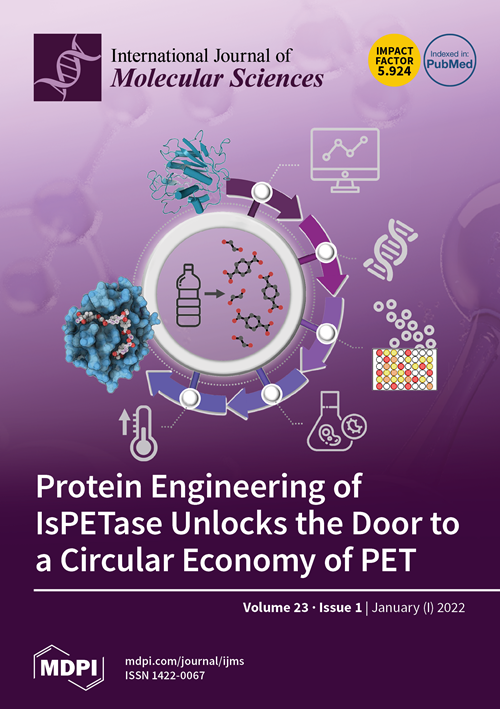Ethyl Acetate Fraction from a Catalpa ovata G. Don Extract Inhibits ɑ-MSH-Induced Melanogenesis through the cAMP/CREB Pathway
IF 4.9
2区 生物学
Q1 BIOCHEMISTRY & MOLECULAR BIOLOGY
引用次数: 0
Abstract
The whitening effect of reducing skin pigmentation is one of the most important goals of cosmetics. The purpose of this study was to determine whether Catalpa ovata extract and its fractions have potential as natural skin-lightening agents. Initially, we screened various fractions of Catalpa ovata extract using an in vitro antioxidant assay. Then, the inhibitory effects of C. ovata extract and its fraction on melanogenesis and the related mechanisms were investigated in B16F1 melanoma cells. The results showed that the ethyl acetate fraction (EF) from C. ovata extract markedly inhibited melanin synthesis in a dose-dependent manner at non-toxic concentrations. Furthermore, EF downregulated both the protein and mRNA levels of tyrosinase, which is a specific enzyme that catalyzes the conversion of tyrosine into melanin. We also found that EF decreased the microphthalmia-associated transcription factor (MITF) at the protein and mRNA levels. EF increased the phosphorylation of ERK and suppressed the phosphorylation of JNK and p38 in ɑ-MSH-induced B16F1 cells. These results indicate that EF can regulate the MAPK pathway. In addition, EF has an anti-melanogenic effect via the downregulation of intracellular cyclic-AMP (cAMP). Nineteen major compounds of EF were identified using LC-MS/MS. Taken together, these results suggest that EF may be a potential anti-melanogenic agent for use in skin-whitening cosmetics and in topical treatments for hyperpigmentation disorders.唐楸提取物中的乙酸乙酯馏分通过 cAMP/CREB 途径抑制 ɑ-MSH 诱导的黑色素生成
减少皮肤色素沉着的美白效果是化妆品最重要的目标之一。本研究的目的是确定梓树提取物及其馏分是否具有作为天然美白剂的潜力。首先,我们使用体外抗氧化试验筛选了梓树提取物的各种馏分。然后,在 B16F1 黑色素瘤细胞中研究了梓树提取物及其馏分对黑色素生成的抑制作用及其相关机制。结果表明,在无毒浓度下,卵形叶蝉提取物的乙酸乙酯馏分(EF)能以剂量依赖的方式明显抑制黑色素的合成。酪氨酸酶是催化酪氨酸转化为黑色素的一种特异性酶。我们还发现,EF 在蛋白和 mRNA 水平上降低了小眼球相关转录因子(MITF)。在ɑ-MSH诱导的B16F1细胞中,EF增加了ERK的磷酸化,抑制了JNK和p38的磷酸化。这些结果表明,EF 可调节 MAPK 通路。此外,EF 还能通过下调细胞内环状-AMP(cAMP)来抑制黑色素生成。利用 LC-MS/MS 方法鉴定了 19 种 EF 的主要化合物。综上所述,这些结果表明 EF 可能是一种潜在的抗黑色素生成剂,可用于美白化妆品和色素沉着疾病的局部治疗。
本文章由计算机程序翻译,如有差异,请以英文原文为准。
求助全文
约1分钟内获得全文
求助全文
来源期刊

International Journal of Molecular Sciences
Chemistry-Organic Chemistry
CiteScore
8.10
自引率
10.70%
发文量
13472
审稿时长
17.49 days
期刊介绍:
The International Journal of Molecular Sciences (ISSN 1422-0067) provides an advanced forum for chemistry, molecular physics (chemical physics and physical chemistry) and molecular biology. It publishes research articles, reviews, communications and short notes. Our aim is to encourage scientists to publish their theoretical and experimental results in as much detail as possible. Therefore, there is no restriction on the length of the papers or the number of electronics supplementary files. For articles with computational results, the full experimental details must be provided so that the results can be reproduced. Electronic files regarding the full details of the calculation and experimental procedure, if unable to be published in a normal way, can be deposited as supplementary material (including animated pictures, videos, interactive Excel sheets, software executables and others).
 求助内容:
求助内容: 应助结果提醒方式:
应助结果提醒方式:


